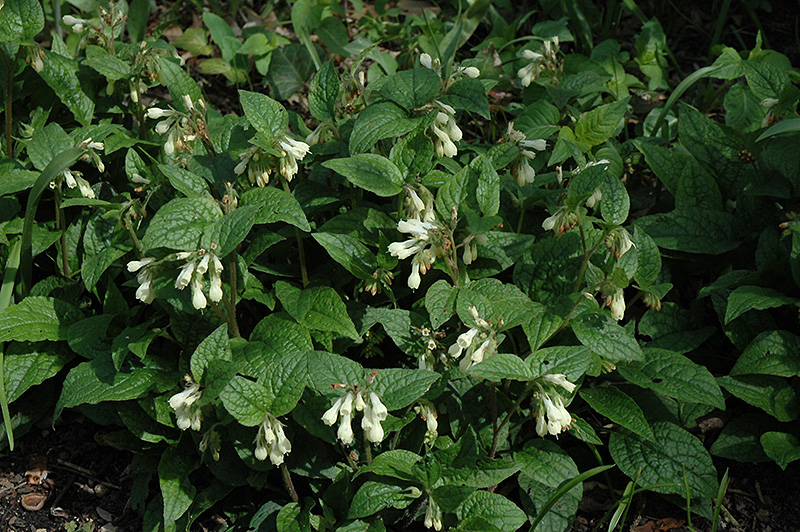Find Plants
Ground Cover Comfrey*
Symphytum grandiflorum
* This is a "special order" plant - contact store for details
Plant Height: 8 inches
Flower Height: 12 inches
Spacing: 20 inches
Sunlight:
![]()
![]()
![]()
Hardiness Zone: 3
Ornamental Features
Ground Cover Comfrey features delicate clusters of creamy white bell-shaped flowers with lemon yellow overtones at the ends of the stems from late spring to early summer. Its pointy leaves remain dark green in color throughout the season.
Landscape Attributes
Ground Cover Comfrey is an herbaceous perennial with a mounded form. Its wonderfully bold, coarse texture can be very effective in a balanced garden composition.
This is a high maintenance plant that will require regular care and upkeep, and should be cut back in late fall in preparation for winter. Deer don't particularly care for this plant and will usually leave it alone in favor of tastier treats. Gardeners should be aware of the following characteristic(s) that may warrant special consideration;
- Invasive
Ground Cover Comfrey is recommended for the following landscape applications;
- Groundcover
Planting & Growing
Ground Cover Comfrey will grow to be about 8 inches tall at maturity extending to 12 inches tall with the flowers, with a spread of 24 inches. When grown in masses or used as a bedding plant, individual plants should be spaced approximately 20 inches apart. Its foliage tends to remain low and dense right to the ground. It grows at a fast rate, and under ideal conditions can be expected to live for approximately 10 years. As an herbaceous perennial, this plant will usually die back to the crown each winter, and will regrow from the base each spring. Be careful not to disturb the crown in late winter when it may not be readily seen!
This plant performs well in both full sun and full shade. It is very adaptable to both dry and moist locations, and should do just fine under typical garden conditions. It is not particular as to soil type or pH. It is highly tolerant of urban pollution and will even thrive in inner city environments. This species is not originally from North America, and parts of it are known to be toxic to humans and animals, so care should be exercised in planting it around children and pets. It can be propagated by division.
* This is a "special order" plant - contact store for details
Disclaimer - This Plant Finder tool is an online resource representing many of the varieties that we carry over the course of the season, and is intended for informational purposes only. Inventory varies seasonally, so we cannot guarantee that every plant will be in stock at all times - please contact the store directly for availability. It does not include our entire inventory of plants, so be sure to visit our store to see varieties that may not be represented on this list.


